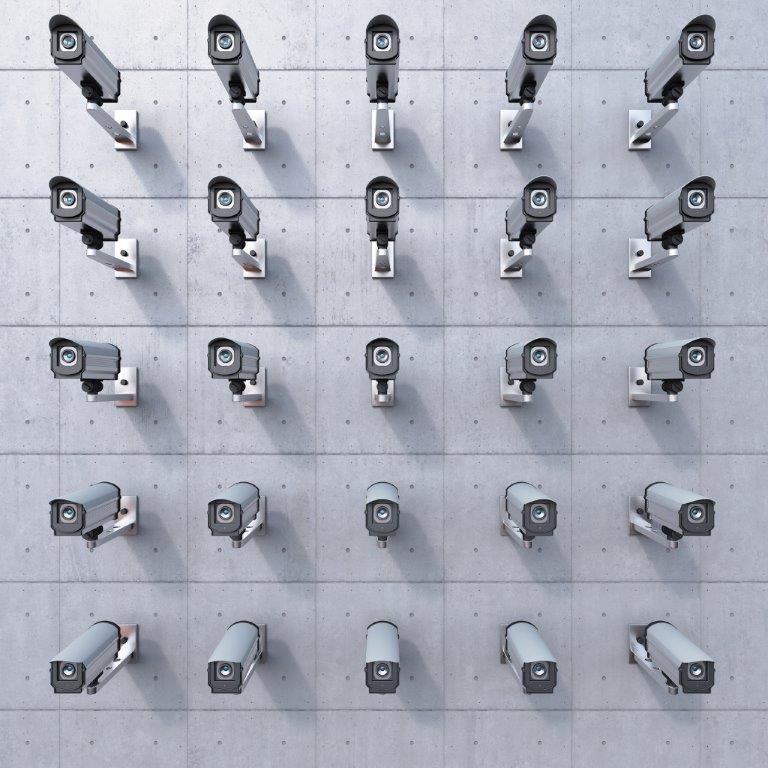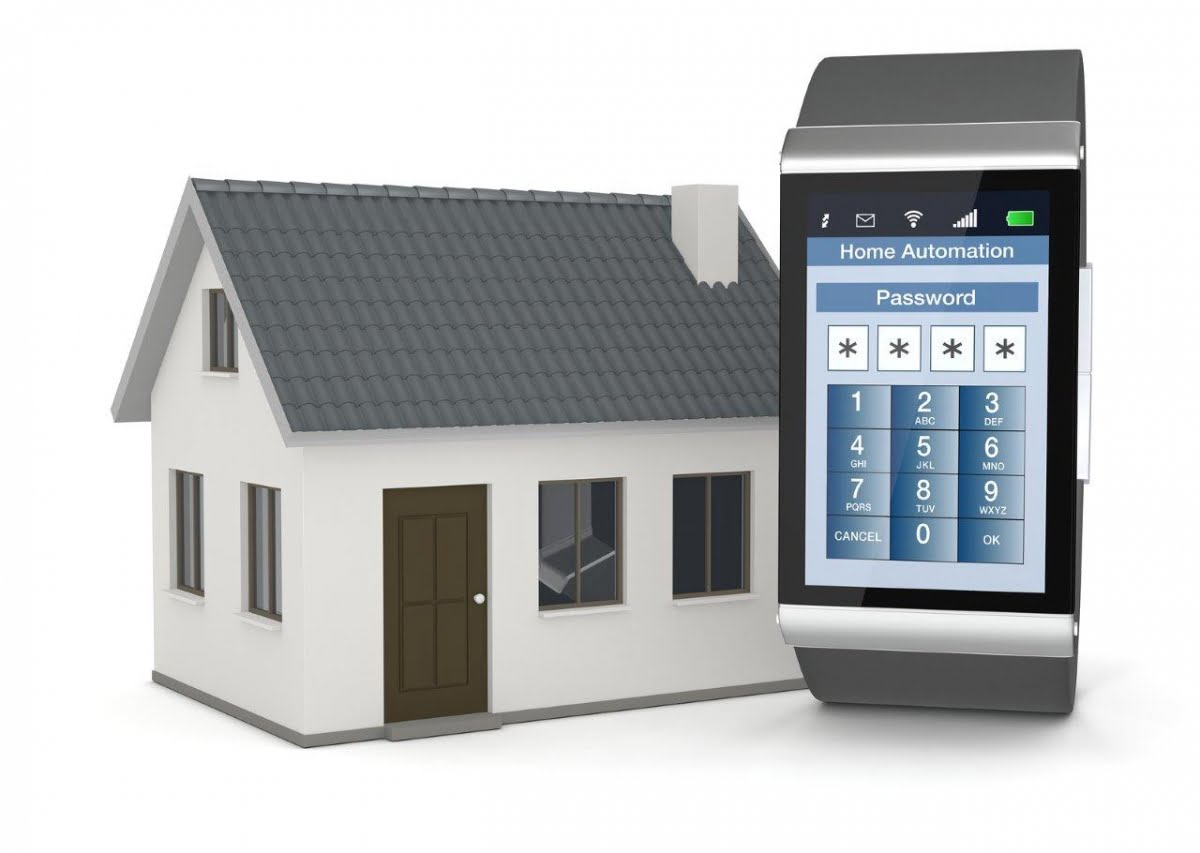Year’s end is always an opportune moment to take a look at the state of the market, considering its current drivers, shifts in technology and consider the shape of the coming year.
In 2014, installers, integrators and end users continued to be overwhelmed with quality choices across most electronic security product segments. Given the maturity of the electronic security market it’s unlikely things are going to change. We’re going to see better performance, easier installation and improved user interfaces. We’re also going to continue to see prices drifting downwards, while high end feature sets push their way down product lines.
In terms of the global financial situation, while there’s less talk about issues of sovereign debt, none of these issues has gone away. Government debt and the inevitable austerity and delay in capital expenditure that goes with it will continue to drag on the Australian economy. There are question marks over the Chinese economy too, and fears for the economies of Eastern Europe for geopolitical reasons surrounding Ukraine and the Baltic states.
Elsewhere, the Indian economy continues to strengthen and the U.S. economy is activating. The U.S. is still the world’s largest consumer of electronic security technology, notwithstanding the fact some simply enormous CCTV solutions of 100,000 cameras or more have been installed in China. Here in Australia, while government debt remains extremely low compared with global averages (30 per cent of GDP compared with 100 per cent for the U.S. and 200 per cent of GDP for Japan), there’s still pressure on spending.
Counteracting this negative pressure on electronic security’s primary driver of construction are world events, the singular most important of 2014 being the emergence of Islamic State as a global force seemingly at war with everything not itself. IS has called for random low-tech attacks in a number of countries, including Australia, and an attack on police in Victoria, the Lindt Cafe seige in Sydney and the attacks on the Charlie Hebdo offices and a kosher deli in Paris, can be sheeted directly home to this call. According to recent chatter from IS, these attacks are only the beginning.
Simply put, IS and its supporters in Australia (hundreds have left Australia during the year to join the Caliphate in Iraq and Syria), represent a material threat that our government and commercial organisations ignore at their peril. While electronic security solutions can’t deconstruct religious doctrines propped up by fallacious appeal to force, they do allow control of access to key sites, real time surveillance and response, and much faster investigations.
Experience suggests high risk locations are areas the public gathers – shopping centres and retail precincts, tourist attractions, sporting venues, public transport hubs and airports. Target hardening of such locations is likely to drive upgrades of cameras, storage systems and management solutions over the next year.
Another area of opportunity is big universities which actively promote their safety and security solutions to prospective students. Given the ubiquity of powerful networks in tertiary centres of learning, universities are technology leaders when it comes to digital security. This offers integrators and manufacturers opportunities but they’re likely to share with the IT integration industry.
Trends in technology
In the domestic market, digital continues to be a slowly unfolding revolution. I think this is in considerable part due to the fact key components of electronic security technology are now in lockstep with consumer electronics and networking technologies. The cloud is the biggest potential component. Affordable bandwidth is the greatest stumbling block for the industry and the strongest lever for telecommunications providers capable of bundling security services with Internet, comms and TV.
Home automation was big in 2013 and it was strong again in 2014. I don’t have a sense of how big automation is locally when compared to straight alarm panels but it’s instructive to consider that 70 per cent of ADT’s sales this year went on the company’s Pulse security and automation panel. AT&T spent 2014 continuing its roll-out of Digital Life, a security and automation solution and most other companies continued strengthening their automation lineups.
Back home, Telstra bought SNP’s electronic security and alarm monitoring business and there’s been plenty of rumour surrounding what the new business TelstraSNP is going to be bringing to market. From the point of view of installers and monitoring stations, TelstraSNP is going to be a powerful competitor. Informed industry chatter suggests the company will be doing CCTV and that it may manufacture its own alarm panels. Time will tell, but it’s likely the gravity of the TelstraSNP business will tug on the orbits of many players in the industry.
Video surveillance trends
I think 2014 showed us some underlying fundamentals in the video surveillance business. Things like 4K are very nice and there may be some sales in that direction but what installers and users want most of all is more capability from existing and more traditional technologies. Installer reflect end user desires when they say they want surveillance cameras that are good in low light, good in strong backlight and that don’t cost too much.
This core fundamental is altering the CCTV industry with recent arrivals like Hikvision hoovering up market share. In the case of Hikvision, which is distributed locally by CSD, the company’s products – including standouts like Darkfighter, its 2000-dollar 1080p PTZ with 150m IR, and the SmartIP 4-Line range – balance strong features with competitive prices. Hikvision has made clear it aims to dominate the market on the basis of superior technology, not low quality.

The impact this combination of quality, performance and sharp pricing is having on competitors comes in multiple directions. Some have dropped prices, some have standardised internal components as is increasingly common in the consumer DSLR market. Other manufacturers who were dominant 5 years ago have gone a little quiet.
My reading of this part of the market is that competition between the market leaders has only just begun. There are some high quality manufacturers out there, including Panasonic, Axis, Sony, Avigilon, Samsung, Vivotek, Hikvision. Bosch has also delivered the goods in 2014. Then there are some new players to consider – Dahua and optical legend, Canon. There are definitely fun times ahead in CCTV camera technology.
Management software is another area where plenty happens in video surveillance. Most VMS products are now thoroughly mature and incorporate mapping with live views, capable analytics and remote access, adequate WAN connections permitting. Bandwidth for enterprise applications continues to be a challenge for end users and integrators and I can’t imagine any remedy in the short term.
Analytics is probably the key step forward of 2014. Sony, Geutebruck GTect, Mobotix MxActivity Sensor, Avigilon, Bosch, Axxon Next, Samsung, DVTel, Hikvision, Avigilon, Briefcam Syndex and plenty more. Capable IVA is now available inside simple solutions, while systems like Mobotix MxAnalytics offer users real capability that does records only what’s needed, saving bandwidth and storage space.
And that saving on storage space is a big deal. Storage costs chew up a chunk of overall solution budget with IP video and it’s hard to see this changing in the foreseeable future. There’s HEVC H.265 in the works but it’s hard to know how far away it is and the savings aren’t anything to write home about. Mind you, H.265 is certainly worth pursuing. It will allow bandwidth and storage savings of about 35 per cent over H.264. This might translate into a lower bit rate, or it might allow a 35 per cent higher quality image stream. I think the latter would probably be the better outcome for many applications.
In 2014, there’s no sign of the death of DVRs and NVRs. Having played with more than a few networked solutions during the year I can understand why this is so. For all their clarity of architecture, many networked solutions suffer from compromises and complexities. Moving image streams through a browser inevitably creates latency, while a direct connection from monitor to DVR/NVR is about as good as you can get from IP video. That same old latency is still there, even in the best cameras.
DVRs and NVRs appeal because they combine inputs, storage, power supply, a network switch and software in a single box that sits at the heart of its own dedicated subnet acting as gatekeeper for an authorised workstation/s. There’s something very clean about such applications and they are not only very affordable and easy to install but they are supported by software of growing excellence.
Something else we’re going to see more of is Synology’s NAS solutions, which are compatible with the company’s Surveillance Station Software out of the box. There’s no doubt that for many modest applications, the latest Surveillance Station 6 is ideal. There’s a licensing fee to pay (about $225 for 4 camera licences) to expand a NAS from the single license it comes with but if you use Synology already it’s a very good deal.
Access control trends
In access control there were a number of things that caught my attention during the year. The first was Axis Communications release of its 1001 access control solution. This is a move by the company to bring the IP video digital revolution to access control. The second was Inner Range’s cloud-based Webtegriti, which will offers simplicity of installation to access control technicians. Other things I liked this year included CEM Systems emerald IP-based reader/controller.
I think the swing from RS-485 LANs to network cable has really only just got underway. The access control industry is a long way behind CCTV when it comes to the digital transition. I’ve spent a bit of time wondering about why this might be. I think the inertia in access control centres around the fact existing solutions are extremely robust. Because they last so long they wind up evolving in mysterious ways. They’re also expensive to replace an utterly integral to site operations.
Lack of budget and a fear of disaster have caused a measure of stagnation in access control. Access control is also a bit of a different animal. It’s integral to people moving around sites, linked to fire alarms. You can’t switch of the access control system and continue to run the business. As an end user, if you take shortcuts on access control, you get bit.
Intrusion alarm trends
Alarm systems have had a giddy year. The primary drivers here are towards local wireless communications, 3G and internet monitoring, automation and remote management of security and domestic sub systems via apps on smart devices. I’m still torn between wireless and hardwired alarm panels. Hardwire means no batteries and no interference with unsecure 433MHz sensor-to-panel comms. Wireless means no chasing of cabling behind walls, between different levels of buildings and far simpler control panel installation. If sensor comms were highly secure and had sufficient bandwidth to shift a handful of images for verification, and battery life was 5 years or more on all devices, wireless would win the day, though there are always sites that defy the passage of RF signals.
My favourite alarm panel of the year is Honeywell’s Vista. I didn’t get to do a full review of DSC’s NEO but I liked the looks of that, too, as well as Bosch’s 2000 and 3000 Series panels. DSC NEO is wireless, while Vista uses Honeywell’s proprietary V-Plex bus with an optional wireless transceiver. My tendency is towards hardwired on bigger and more complex commercial and industrial sites but if wireless works in these applications it’s so much easier to do a greenfield install. You can forget about the horrors of glass doors and windows, and internal and external walls.
There was much more talk about video verification this year but for all the talk I’ve still not seen an alarm sensor/camera I truly believe in. By that I mean an affordable device that offers not only quality detection but quality images of intrusion events, with the whole thing bound up as a serious monitoring package. There’s potential from various quarters but nothing real yet. There are a couple of providers who use serious surveillance cameras to support video verification at monitoring centres but there’s no industry standard solution.
There’s greater complexity here than meets the eye, obviously. Alarm panels are not DVRs so they can’t store real time 720p image streams, 2 minutes prior and 2 minutes after an alarm event. The systems available are very simple and take a small number of snaphots, or they are real CCTV, making them complicated and expensive, given the more important aspect of an alarm panel is that it should cost no more than dinner for 2, with a bottle of less than average wine.
The technology to get this right does exist but someone needs to bring it all together from sensor-camera to monitoring station in one single solution. The manufacturer getting closest to this grail is Risco. Its VuPoint management solution is a very strong offering for 2014 and you get all the remote management functionality you could ask for. VUpoint allows users to remotely view their premises through live video clips up to 30 seconds long via the iRISCO smart phone app.
Video clips can be viewed using VUpoint in response to a wide range of triggers, detector alarm event, panic, system disarm by code, unlimited quantity of IP cameras; increasing security and sales potential, and unlimited potential for installers; simple plug and play installation. Risco VUpoint leads the game with video verification and remote control for domestic application.

In SEN’s monitoring feature a few months back we talked about the Lowe Report, a study in the U.S. that highlighted the fact residents saw security as the core of a smart home yet desired self-monitoring and a high level of control over their own systems. They were also resistant to ongoing payments. This reflects the intense connectedness of the customer base. Most people are locked to their mobile devices and want their systems to communicate with them directly.
It’s something alarm manufacturers and monitoring stations will have to deal with in the future. Someone is going to give the public a quality alarm and automation solution that can be monitored by the resident and/or a third party monitoring station. Who that someone is remains undecided.
DIY – some people say the industry should worry about DIY and others say it need not. Generally, I think the current crop of wireless alarm systems is sufficiently complicated in terms of keypad programming codes and whatnot to keep all but the geekiest do-it-your-selfers at bay. Wi-Fi-based alarm systems are going to be a completely different story.
I think we’ll see some releases in this area in 2015. There are security risks with an alarm panel as a hub but there are risks with 433Mhz sensor jammers, too. In this area I’d like to see Wi-Fi everything but that means remote power. Perhaps Zigbee for most devices and Wi-Fi for the hub/controller and surveillance cameras sounds is a better balance.
Distribution and installation
On the distribution side the year saw plenty. Hills made a number of key changes but there’s a sense the company is about to start making yards up the middle. After surviving its launch into the teeth of the GFC, Central Security Distribution has transformed itself into Australia's electronic security distribution juggernaut in just 7 years. The company goes from strength to strength thanks to canny distribution arrangements, including Hikvision, Avigilon, Paradox and its core Inner Range product line.
QSS also went through changes during the year, with a swag of new product taken on. Bosch is probably the most talked about of these. The German manufacturer broadened its route to market with some of its CCTV and alarm gear now being distributed by QSS nationally. Elsewhere Video Security Products reputation grows, while Seadan Security is on a trajectory of serious expansion. We also saw Canon buy Milestone and Inner Range undertook a redistribution of shares late November. BGW Technologies is also growing, having moved to larger premises in Sydney. The company continues to add to its excellent product range.
For installers, training is one of the biggest issue in 2014 and other concerns include falling margins on hardware thanks to competition based on price rather than quality of solutions. This latter thing is a feedback loop that is probably the greatest challenge the industry faces moving forward. End users want to pay less so installers use cheaper product to survive in an ecosystem with less margin. In response, manufacturers take manufacturing offshore, standardise internal components and cutting corners on quality.
Video surveillance manufacturers might compromise on optical and sensor quality, with software tidying up shortcomings in a sort of real-time post processing. When it comes to alarm systems, I think most new sensors are ubiquitously low end. Single or dual pyro at most, often without creep zones. Panels are still shipped with LCD keypads despite the fact touch screens are much more intuitive for end users and installers. There is a point where low quality and worthwhile functionality intersect. I think it’s safe to say we are going to discover exactly where that point might be. ♦








